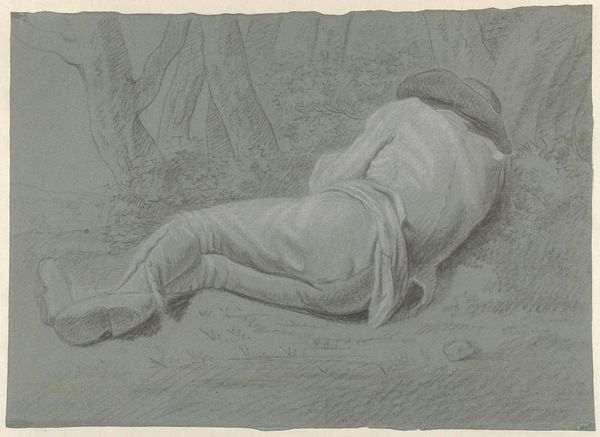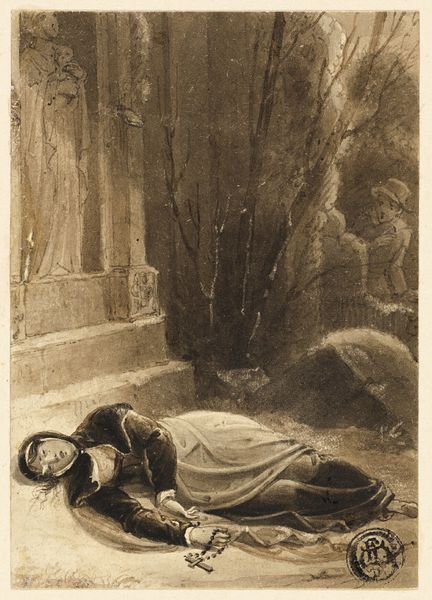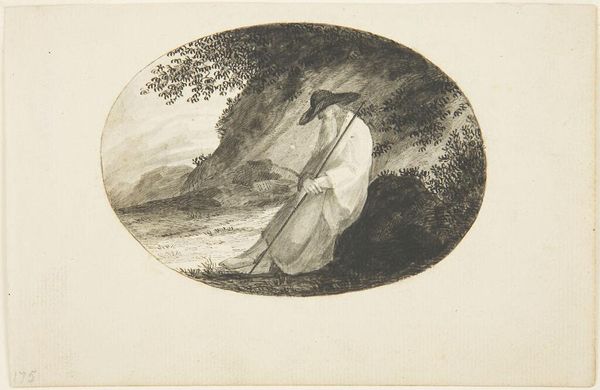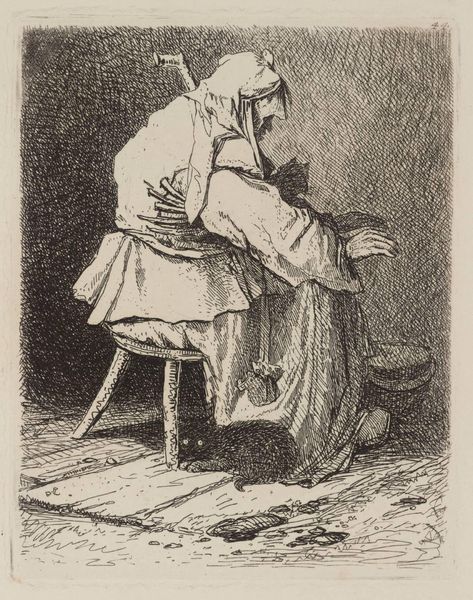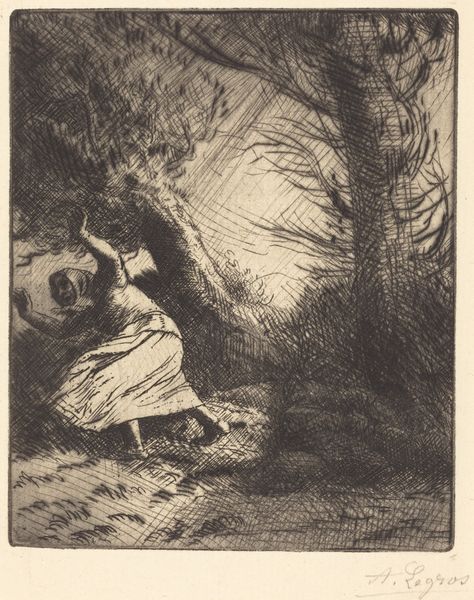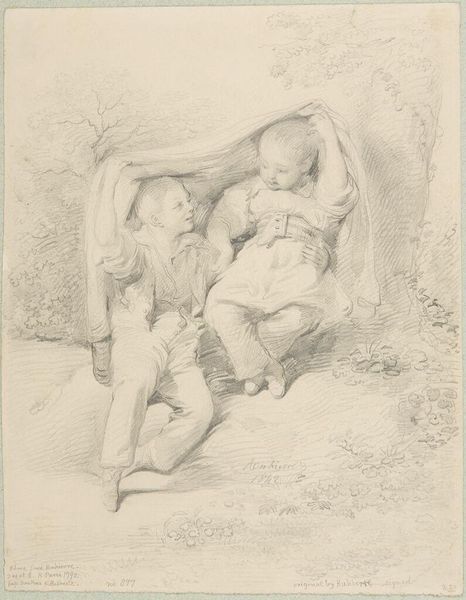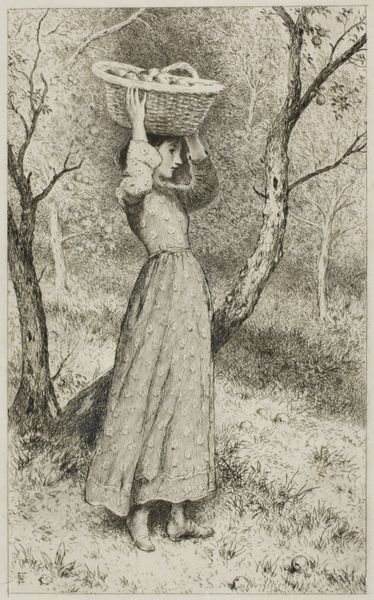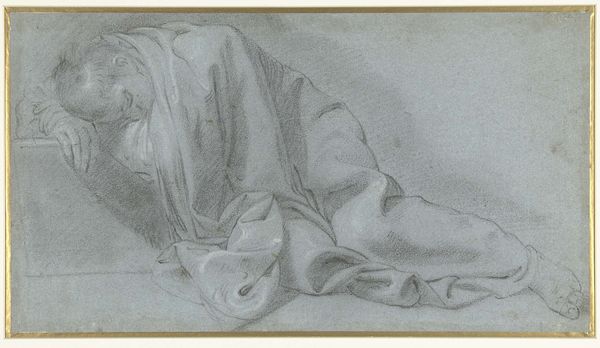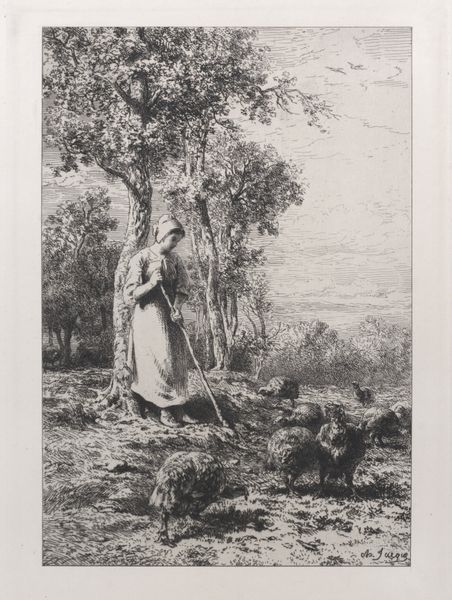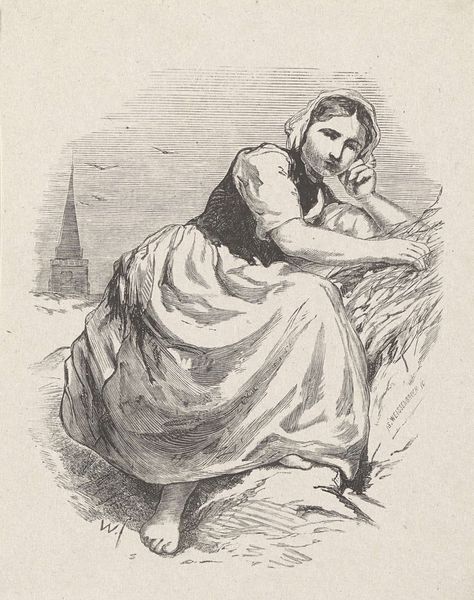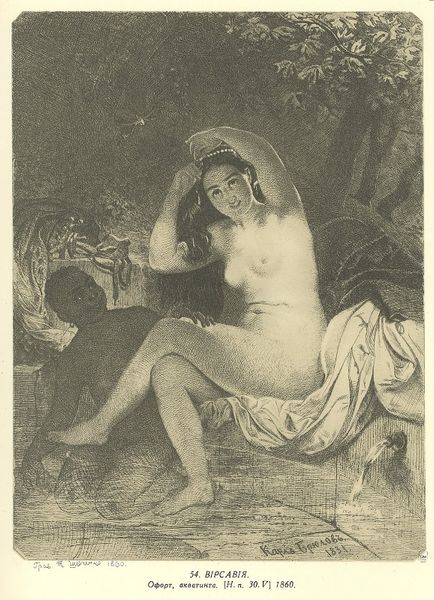
Dimensions: height 287 mm, width 465 mm
Copyright: Rijks Museum: Open Domain
Editor: Here we have "Girl Lying Under Trees by a Water," a pencil and graphite drawing by Hendrik Adriaan Christiaan Dekker, created sometime between 1846 and 1905. There’s a really serene, almost melancholy, quality to the work. How do you interpret this work? Curator: The image immediately draws my attention to the ways in which the female figure is situated within the natural world. Note how her gaze is directed away from us, toward the landscape. How might this connect with broader 19th-century notions about women, nature, and artistic agency? Editor: Agency? You mean the way women were perceived? Curator: Precisely. Think about the Romantic era and its emphasis on nature as a source of spiritual and emotional experience, often idealized as feminine. But, was that reverence reflected in real life? Or were women placed as passive subjects? Editor: It is a little concerning that the woman looks trapped and has taken on a subservient pose. Is she actually trapped, and her lack of visibility, makes her almost invisible? Curator: Exactly! Perhaps this work critiques the way women were subtly positioned *within* landscapes, as almost one with nature. It’s possible the artist invites us to consider their own confinement and lack of power, in the bigger picture, by focusing our attention on the solitary figure within that broader socio-political backdrop. How does the artist engage the historical issues? Is there any subtle visual indicator? Editor: Looking closer, it’s like the trees and shadows are pressing in on her, creating a sense of enclosure. So maybe it’s not just about beauty, but also a commentary on limited roles and the pressure of society on women? Curator: Exactly! And that tension between outward beauty and underlying social commentary is where art can truly spark conversations and challenge assumptions even now. Editor: That's fascinating. I hadn't considered that the landscape itself could be a form of constraint, almost like a stage setting societal expectations. Curator: Art invites us to consider familiar images anew through socio-political considerations, sparking vital discourse. Editor: Thank you for making that clear! Now, I see beyond what I had presumed!
Comments
No comments
Be the first to comment and join the conversation on the ultimate creative platform.

